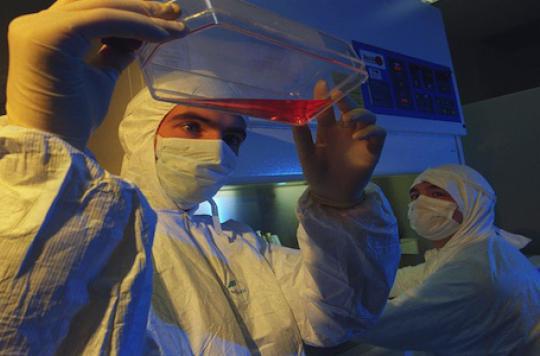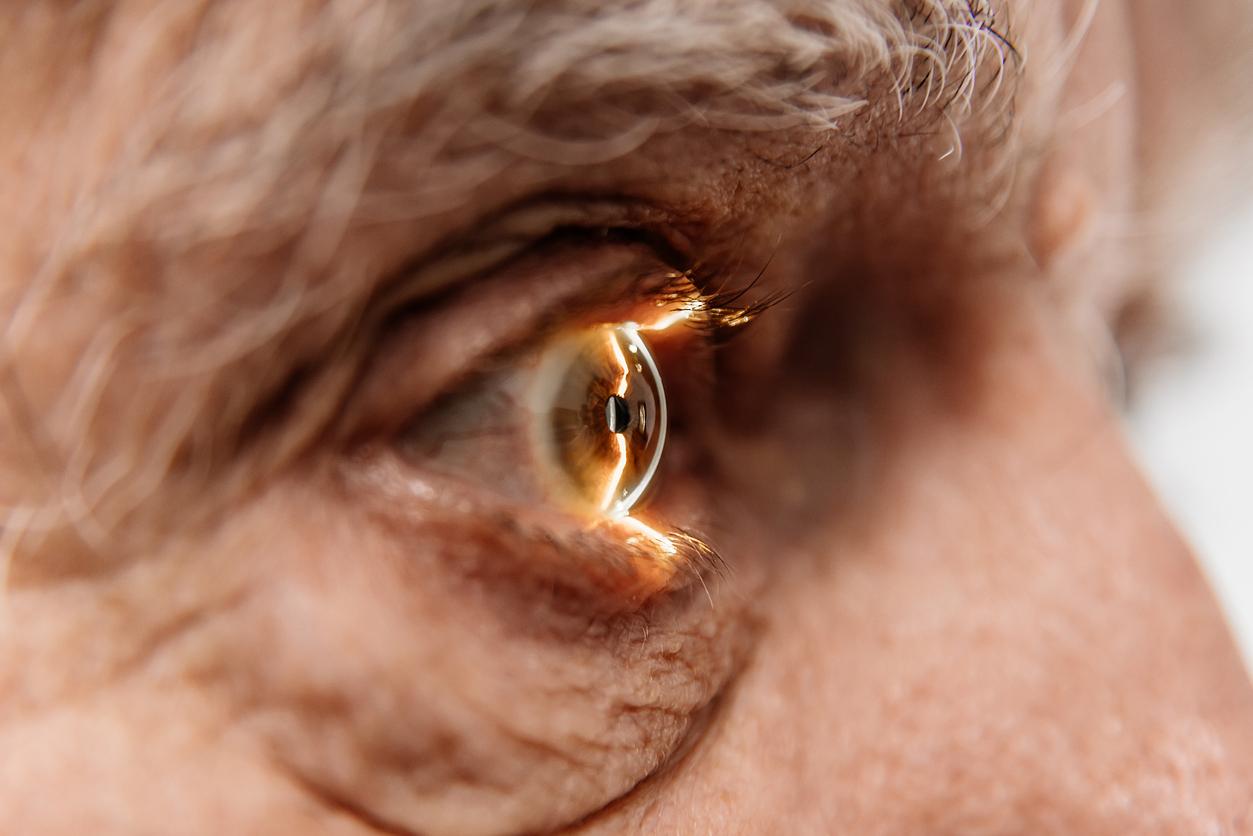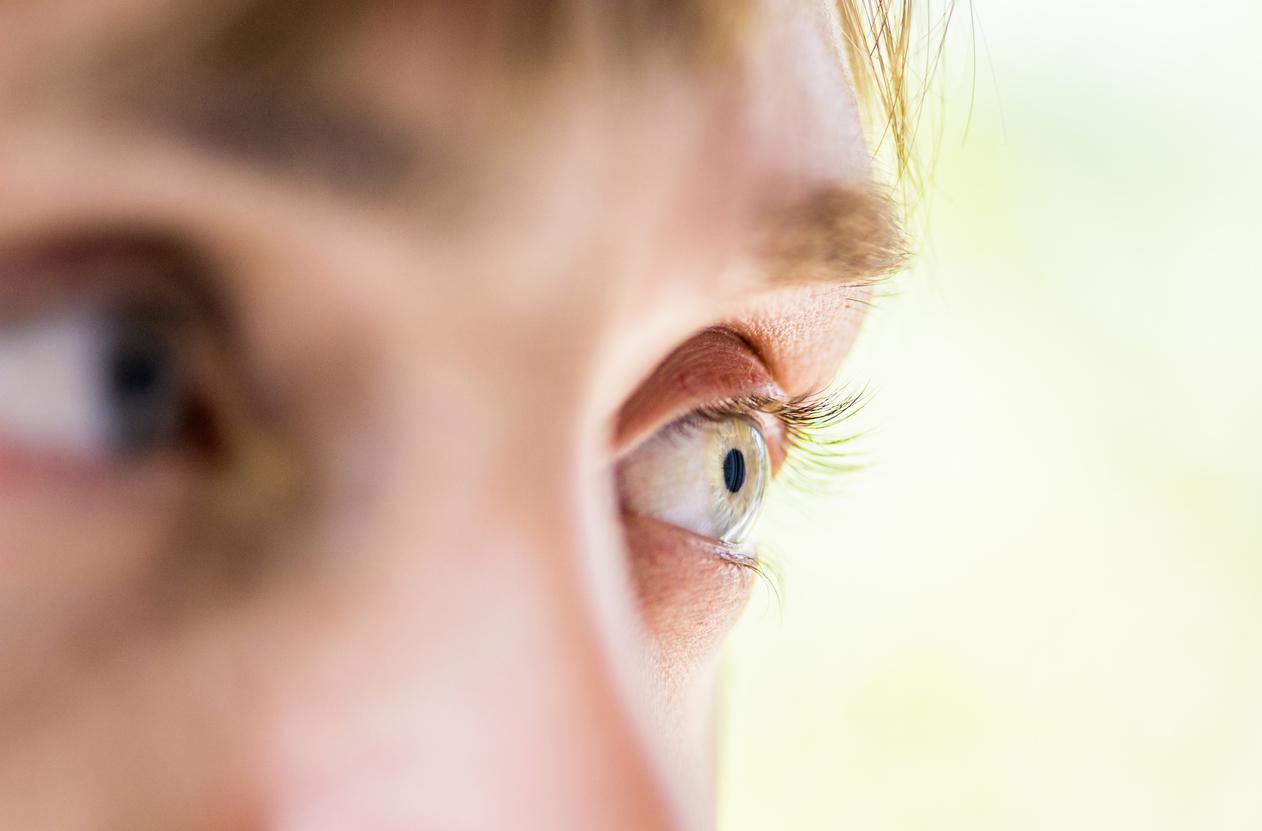The results of a gene therapy trial in a rare eye disease confirm the hope of one day curing more common diseases such as AMD or certain genetic forms of blindness.

While advances in gene therapy continue to be talked about, a new study published in The Lancet confirms the hope that this new form of treatment arouses in particular in genetic diseases of the eye. Carried out in 6 patients aged 35 to 63 years and suffering from choroideremia, a rare incurable pathology leading to a progressive loss of vision due in particular to a degeneration of the retina, this study seems very promising.
A drug gene that stabilized disease and improved eyesight
In this pathology, the light-sensing cells located at the back of the eye gradually die off. “This cellular degeneration is quite slow, which offers a large enough window of time to intervene before the onset of visual loss,” explains Professor Robert MacLaren of the University of Oxford who led this work. This team therefore injected the retina of these 6 patients with a vector capable of delivering a gene-drug making it possible to stop the degeneration of eye cells. At the end of the study, Prof. Robert MacLaren said he was “absolutely delighted” with the results. The site BBC News who had covered the launch of this clinical trial reports, for example, the excellent results obtained in the 1er patient treated.
While Jonathan Wyatt, 63, was still able to see slightly at the start of treatment, this gene therapy experience allowed him to not only stabilize his vision, but above all improve it. Today he is able to read 3 lines below on the classic vision control panel for opticians. “We couldn’t have asked for a better result,” adds the lead author. Overall, 6 months after injection of the gene-drug, all 6 patients recovered at least their pre-procedure visual acuity, and two patients therefore showed considerable visual improvement. Importantly, patients also developed better light sensitivity and better night vision. “The colors of the trees and flowers seem much more vivid to me and I was able to see stars for the first time since I was 17 when my eyesight started to deteriorate,” said one of the patients treated in this study at BBC News.
Treatment that could cure some forms of blindness
“I have lived the past 25 years with the certainty that I will go blind and now there is a possibility that I will keep my sight,” one of the patients told BBC News. While this man, when diagnosed, thought he was not lucky enough to see his 9 year old daughter grow up, now he is delighted that maybe one day he may even have the chance to watch his grandchildren grow up. . If the improvements observed in these patients continue, the authors hope to be able to offer this treatment to young patients suffering from the same disease, in order to prevent them from losing their sight one day. According to Prof. MacLaren: “Our results are very promising and suggest that gene therapy could be used to prevent sight loss in other retinal diseases such as age-related macular degeneration (Editor’s note, AMD ) ”. Indeed, choroideremia has similarities with AMD, these are the same cells that should be repaired according to these researchers. Even if they admit not knowing for the moment which gene should be targeted precisely, to consider curing this other pathology, the main thing according to them is that now they know how to do it.
The scientific community is enthusiastic about these results
In a comment published simultaneously in the Lancet, other international specialists express their enthusiasm for this study. “The ultimate goal of gene therapy in choroideremia would be to save the central retina from degeneration. The short follow-up period of this new study precludes any conclusion on the prevention of long-term degeneration … Even if the effect turns out to be only mild, it could have important positive repercussions, as there are additional therapeutic means targeting photoreceptors that could help to save or restore visual function ”jointly explains Prof. Hendrik Scholl from Johns Hopkins University in the United States, and Prof. José Sahel, from the Institut de la Vision in Paris.
.















